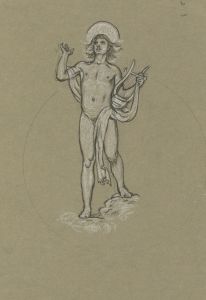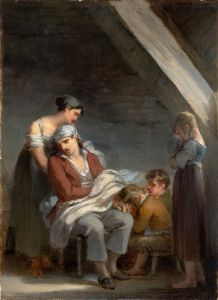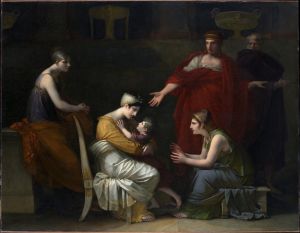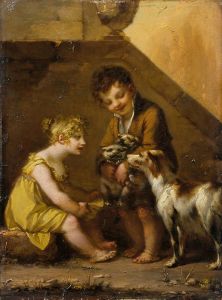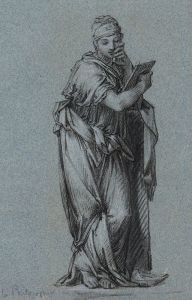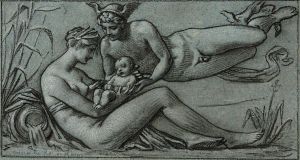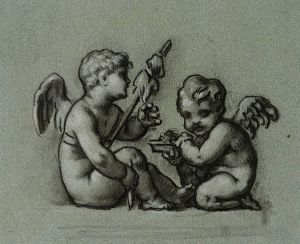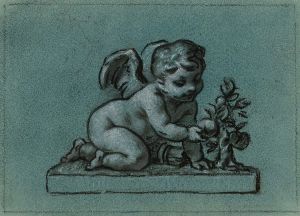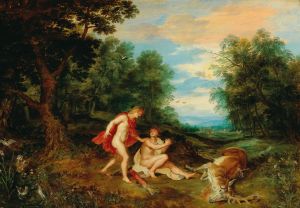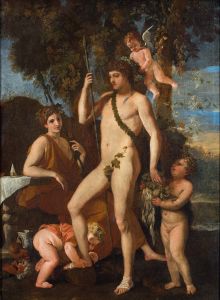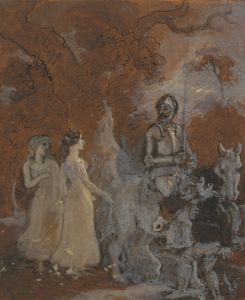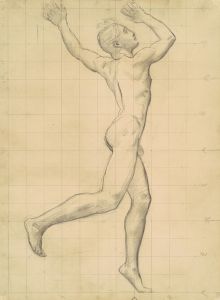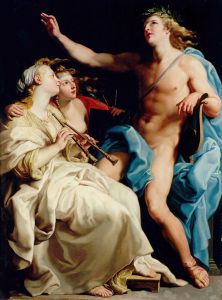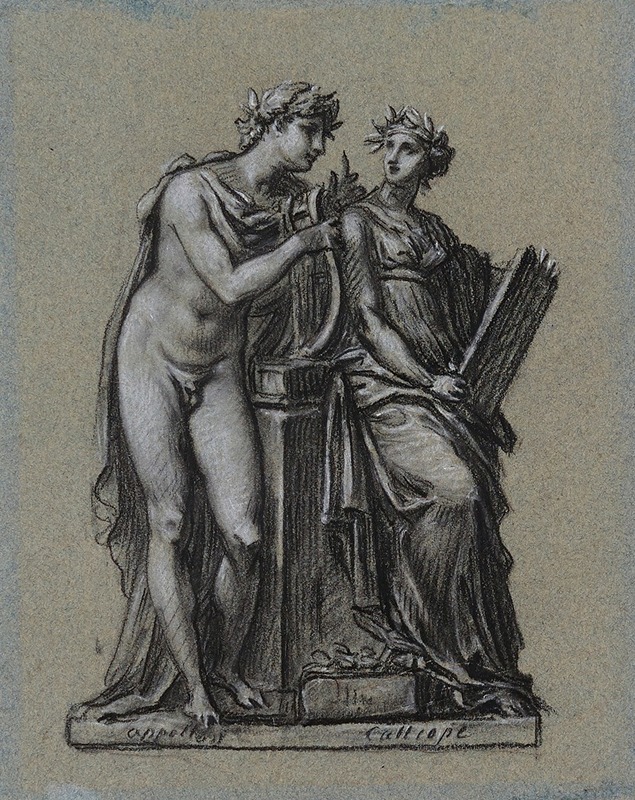
Apollon et Calliope
A hand-painted replica of Pierre-Paul Prud'hon’s masterpiece Apollon et Calliope, meticulously crafted by professional artists to capture the true essence of the original. Each piece is created with museum-quality canvas and rare mineral pigments, carefully painted by experienced artists with delicate brushstrokes and rich, layered colors to perfectly recreate the texture of the original artwork. Unlike machine-printed reproductions, this hand-painted version brings the painting to life, infused with the artist’s emotions and skill in every stroke. Whether for personal collection or home decoration, it instantly elevates the artistic atmosphere of any space.
Pierre-Paul Prud'hon was a French Romantic painter known for his allegorical and mythological subjects, as well as his portraits. One of his notable works is "Apollon et Calliope," which depicts the Greek god Apollo and the Muse Calliope. This painting is an example of Prud'hon's skill in combining classical themes with the Romantic style that was emerging during his time.
Prud'hon was born in 1758 in Cluny, France, and he studied art in Dijon and later in Paris. He was influenced by the works of the Italian Renaissance and the Baroque period, which is evident in his use of soft lighting and delicate forms. His work often features a dreamlike quality, with an emphasis on emotion and mood, characteristics that are present in "Apollon et Calliope."
The painting "Apollon et Calliope" illustrates a scene from Greek mythology. Apollo, the god of music, poetry, and the arts, is often associated with the Muses, who are the inspirational goddesses of literature, science, and the arts. Calliope, one of the nine Muses, is specifically the Muse of epic poetry. In Prud'hon's depiction, Apollo is shown with his lyre, an instrument that symbolizes his musical prowess, while Calliope is portrayed with a writing tablet, indicating her role in inspiring epic poetry.
Prud'hon's work is characterized by its graceful figures and harmonious compositions. In "Apollon et Calliope," he uses a soft palette and gentle contrasts to create a serene and ethereal atmosphere. The figures are elegantly posed, with flowing drapery that adds to the sense of movement and fluidity in the composition. Prud'hon's ability to convey emotion through subtle expressions and gestures is evident in this painting, as the interaction between Apollo and Calliope suggests a harmonious and creative partnership.
The painting reflects the Romantic era's fascination with classical antiquity and its ideals of beauty and harmony. Prud'hon's approach to these themes was distinct from his contemporaries, as he often infused his classical subjects with a sense of introspection and melancholy. This emotional depth is a hallmark of his style and contributes to the enduring appeal of his work.
Prud'hon's influence extended beyond his lifetime, as his unique blend of classical and Romantic elements inspired later artists. His work, including "Apollon et Calliope," is celebrated for its technical skill and its ability to evoke a sense of timeless beauty.
Today, Pierre-Paul Prud'hon is recognized as one of the leading figures of French Romanticism. His paintings are held in high regard and are part of major art collections around the world. "Apollon et Calliope" remains an important example of his contribution to the art world, showcasing his mastery of form, composition, and emotional expression.





